Christianity’s Golden Calf
The account of the golden calf in Exodus 32 wasn’t an isolated incident in history.
 Read Time: 9 minutes
Read Time: 9 minutes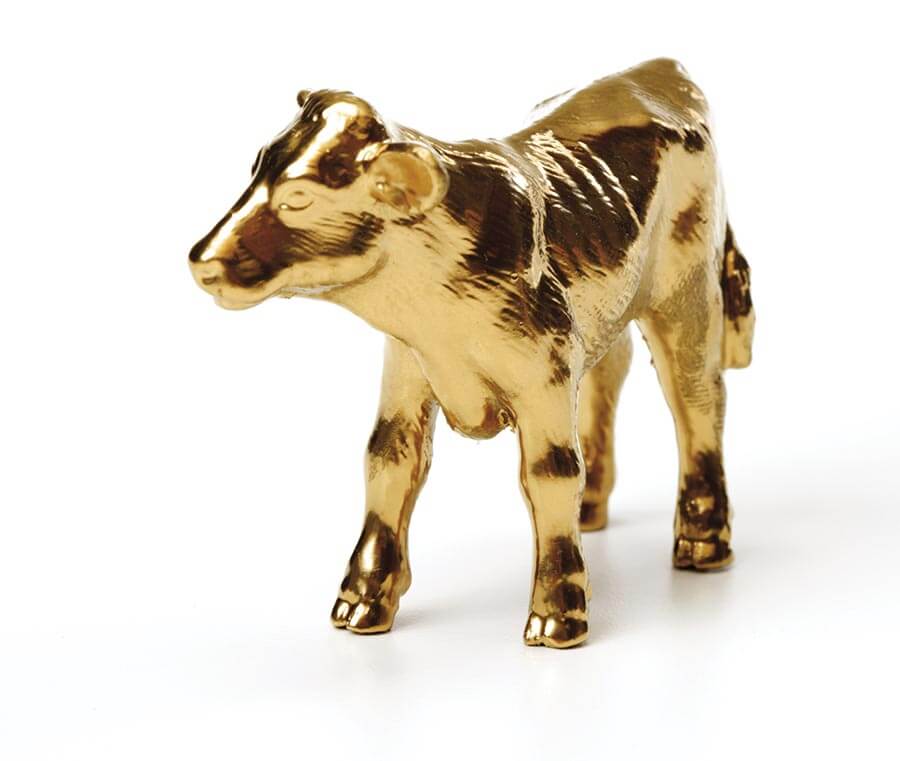
When Paul wrote about it in 1 Corinthians 10, he said, “Do not be idolaters as some of them were; as it is written, ‘The people sat down to eat and drink and rose up to play.’” (v. 7).1 Then Paul, using the Greek word typos, in the phrase, “These things took place as examples for us” (v. 6) gives a series of examples from the wilderness wanderings to apply to our lives. In so doing he points out to us that something like the golden calf incident is typical of human nature.
In this article, I want to illustrate that the typical story of the golden calf wasn’t something that just happened in Biblical times. It also crops up at least twice in Christian history, having a direct bearing on the importance of first principle doctrines about God.
something like the golden calf incident is typical of human nature
First, consider the main events that led up to the incident of the golden calf. The children of Israel were imprisoned as slaves in Egypt. God sent Moses to bring ten plagues on Egypt so the Israelites might be set free. The plagues directly confronted the Egyptian pantheon of false gods and signaled the complete collapse of their worldview. After finding freedom, Moses led the Israelites to Mount Sinai, where God gave them his Law. But when Moses came down the mountain with the stone tablets, he saw they had immediately apostatized in the worship of their newfound idol.
In the account of the plagues, we come across the magicians of Egypt. They were called magicians because of the Egyptian belief that everything in creation was ordered by something called heka, roughly translated as “magic.” Heka was the power that even the gods depended on, and the magicians invoked heka as priests of the Egyptian cultic arts. The Hebrew word for “magician,” chartom, is a refraction of the Egyptian word hry-hb, and literally means “the carrier of the book of ritual.” They were highly learned priests, masters of their literary traditions and rituals, Egypt’s elite religious professionals.
After the Israelites left Egypt, God chose Aaron to be the High Priest of true religion. However, it was Aaron who was the one who made the golden calf. What happened?
Joshua 24:14 tells us that when they were enslaved, the Israelites served the gods of Egypt, and while God led them out of Egypt, it wasn’t so easy to get Egypt out of them. Look at the context of Exodus 32, and see how everything takes us back to Egypt. In the previous section (chapter 31), the account of the pattern of the tabernacle is wrapped up with a description of those who would build it, like “Bezalel the son of Uri” (v. 2). We’re told God “filled him with the Spirit of God” (v. 3) to do things like “work in gold, silver, and bronze.” (v. 4).
Now, look at the contrast in Exodus 32 when Aaron “received the gold from their hand and fashioned it with a graving tool and made a golden calf.” (v. 4). The juxtaposition is fascinating because there is no indication that Aaron was one of the men who was filled with the spirit of God. He worked with metal, but where did he obtain his skill? If it wasn’t from God, the only place where he could have learned metallurgy was in Egypt, and it so happens that metalworking in Egypt was a highly advanced art:
“The methods of metalworking—melting, forging, soldering, and the chasing of metal—were not only much practiced, but also most highly developed. The frequent references of metalworking in Ancient Egypt give us a truer conception of the importance of this industry in Ancient Egypt.” (Ancient Egyptian Culture Revealed, 2nd edition by Moustafa Gadalla) [Greensboro, NC: Tehuti Research Foundation, 2007]
If we’re right that Aaron learned his craft in Egypt, then it adds weight to the idea that he was constructing what he was used to in Egypt—an idol of one of their gods. There are two main Egyptian gods associated with bovine creatures. One was Hathor, who they represented in the form of a cow. However, the word for “calf” in Hebrew, egel, is masculine, so it’s more likely that if Aaron was making an Egyptian idol, it was the god Apis. Apis, who was represented in Egypt by a bull, was not one of the main gods of Egypt but a lesser, intermediary god, a mediator between the Egyptian people and the god Ptah.
metalworking in Egypt was a highly advanced art
After the section about the builders of the tabernacle, there’s a seemingly random reminder of the Sabbath— “Six days shall work be done, but the seventh day is a Sabbath of solemn rest.” (v. 15). The reason for this reminder is that the building of the tabernacle was an object lesson to teach the children of Israel about God’s purpose in creation. The Sabbath itself recalled creation— “It is a sign forever between me and the people of Israel that in six days the LORD made heaven and earth, and on the seventh day he rested and was refreshed.” (v. 17).
Interestingly, according to the Egyptians, the god Ptah was the fashioner of the Universe, and the Apis bull was his sacred animal. He was also the patron god of craftsmen and builders and is particularly associated with sculpture and metalworking. Not only that, but special tools were also used to perform ceremonies in his name, including the ritual adze, a graving tool. Remember what we learn about Aaron—“he received the gold from their hand and fashioned it with a graving tool and made a golden calf.”
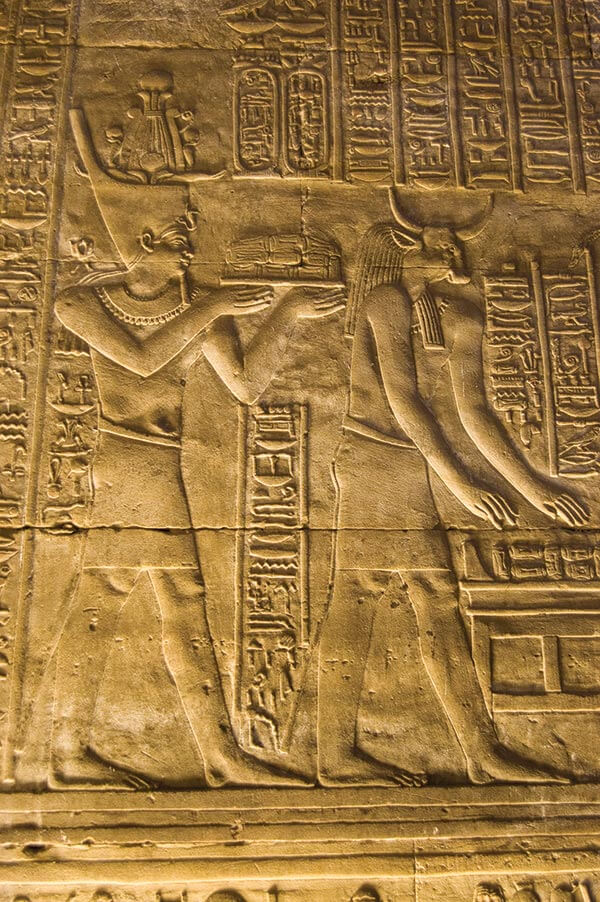
There’s one more contrast with Exodus 31. But before we look at it, remember what the magicians, the priests of Egypt, said when they met their match in the plagues—“Then the magicians said to Pharaoh, ‘This is the finger of God.’” (Exod 8:19). That phrase is only used in one other context in the Old Testament—Exodus 31.
The last part of Exodus 31, after we’re told about the tabernacle builders and Sabbath law, is when Yahweh “gave to Moses, when he had finished speaking with him on Mount Sinai, the two tablets of the testimony, tablets of stone, written with the finger of God.” (v. 18). Here was God’s law, stamped with divine approval by the finger of God.
Contrast that with Aaron using the graving tool to fashion the golden calf. The Hebrew word used for “graving tool” is cheret, translated “pen” in Isaiah 8:1 (see NKJV), meaning it was some sort of stylus. That word cheret also happens to be the only other word in the entire Old Testament that comes from the same Hebrew root as the word for “magicians,” chartom. Remember the literal meaning of the word— “the carrier of the book of ritual.” The magicians were lector-priests, meaning they were the ones who would read out the spells and incantations of the Egyptian cult. But they would also have to have written down those spells, and for that, they would need a stylus. Perhaps Aaron was using such a stylus for his graving tool.
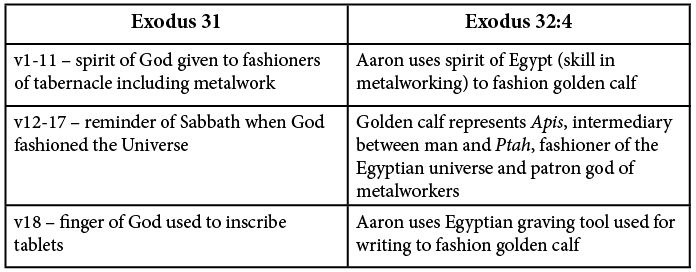
In Aaron’s mind, however, he wasn’t replacing the worship of Yahweh. After fashioning the golden calf in the next verse, he said, “Tomorrow shall be a feast to the LORD.” It’s an example of religious syncretism, the mixing of truth and error.
The psalmist’s commentary on this incident is insightful. He writes, “They made a calf in Horeb and worshiped a metal image. They exchanged the glory of God for the image of an ox that eats grass.” (Psa 106:19-20). Notice the psalmist doesn’t say they exchanged God but the “glory of God.”
To understand the implications of that statement in Psalm 106, we need to look more closely at what was being exchanged in Exodus 32. We’ve already seen that they weren’t replacing Yahweh. However, the impetus for their decision to make a tangible god is Moses disappearing up the mountain.
When the people saw that Moses delayed to come down from the mountain, the people gathered themselves together to Aaron and said to him,” Up, make us gods who shall go before us. As for to his Moses, the man who brought us up out of the land of Egypt, we do not know what has become of him.” (v. 1).
While the golden calf was not a replacement for Yahweh, it was a replacement for Moses. Remember, Apis was an intermediary god, just as Moses was between God and the people. The people needed another go-between with him gone, and they chose Apis.
Do we see anything like this in history? Our mediator is the Lord Jesus Christ, and Paul warned,
But I am afraid that as the serpent deceived Eve by his cunning, your thoughts will be led astray from a sincere and pure devotion to Christ. For if someone comes and proclaims another Jesus than the one we proclaimed, or if you receive a different spirit from the one you received, or if you accept a different gospel from the one you accepted, you put up with it readily enough. (2 Cor 11:3-4).
In effect, this is what is happening in Exodus 32. Egypt had deceived Aaron and the people, and they went back there in their hearts. They lost their devotion to their leader Moses and replaced him with “another Jesus” in the form of Apis, the golden calf. Not only that, but they also received a “different spirit.” Instead of the spirit of God that enabled Bezalel to build the tabernacle, Aaron invoked the spirit of Egypt to work metal and make the golden calf. It was a “different gospel” in the sense that the finger of God used to inscribe the tablets was replaced by an Egyptian stylus used for writing Egyptian gospel.
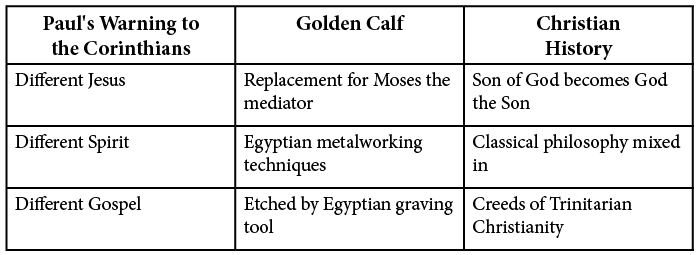
What happened in Exodus 32 was typical of human nature. Think about things from the point of view of Christian history. After Jesus and the apostles preached the gospel, many men and women were converted from the legalism of the Jewish religion and, later, the paganism of the Roman world. Just like the Israelites, they were freed from spiritual slavery.
However, many ante-and post-Nicene theologians (before and after AD 325) had been elites in their pagan religions before their conversion. And many of them brought the learning of classical philosophy with them into their approach to Scripture. Clement of Alexandria, Egypt (c. 15-215), an ante-Nicene theologian, for example, wrote this:
“We are not far off the mark if we repeat the common thought that indeed philosophy has been given to the Greeks as their own kind of covenant, their foundation for philosophy of Christ.” (Clement of Alexandria, Miscellanies 6.8 (PG. 9. 288), Migne, Patrologia, vol. 9, col. 288).
What happened in Exodus 32 was typical of human nature.
The post-Nicene theologians were no different. One of the most lauded of all, Augustine of Hippo in North Africa (354-430), wrote:
“There are in the writings of the Platonists, ways that show the path that leads to belief in God and His Word.” (Augustine, Confessions 8, 5).
Like Aaron, these priests of Christianity took the graving tools of the classical philosophy they never really left, and fashioned Christianity’s golden calf in the form of their writings and formalized it in documents like the Nicene Creed. In doing so, they replaced the true mediator between God and men, the man Christ Jesus, with “another Jesus” built on the foundation of a “different spirit” and resulting in a “different gospel.” Intriguingly, Apis himself was considered to be part of a Trinity:
“In the Demotic Chronicle from the third century B.C.E.: ‘Apis, Apis, Apis’: that means Ptah, Re, Harsieis, who are the lords of the office of the sovereign… The three gods denote Apis. Apis is Ptah, Apis is Re, Apis is Harsieis.” (Griffiths, Triads and Trinity, pp. 256-259, after Morenz, Egyptian Religion. As cited by Marian Hillar, From Logos to Trinity: The Evolution of Religious Beliefs from Pythagoras to Tertullian, p. 304).
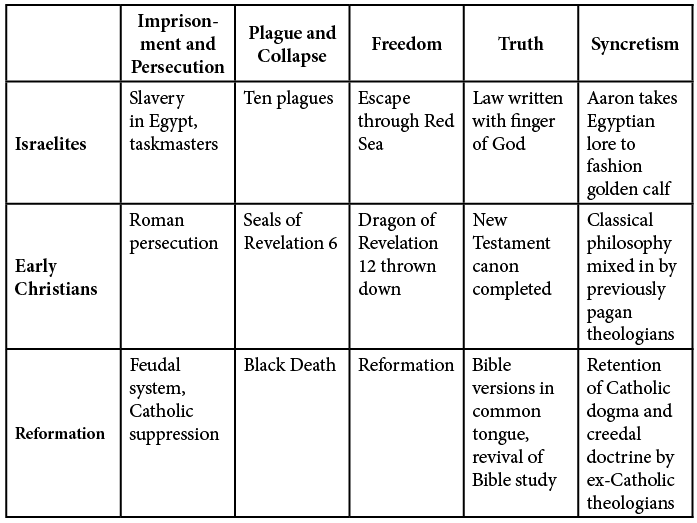
As we saw last month, the Trinity is built on the notion of homoousion. That’s like exchanging the glory of God for a golden calf. Instead of understanding the relationship between God and Jesus as something spiritual—based on God’s glory, His invisible characteristics—the Trinity stresses the idea of the consubstantiation, that Jesus and God are of the same substance, thus entirely missing the point.
The events surrounding the Nicean Council aren’t the only time when the typical nature of the golden calf repeated itself. For centuries during the Middle Ages, the people of Europe were bound by the chains of the feudal system. All that changed because of a plague (the Black Death) that helped cause the collapse of the feudal system, leading into the Renaissance and the Reformation. The neo-Egyptian Catholic Church lost many leading theologians, like Martin Luther (Germany), John Calvin (France and Switzerland), and Ulrich Zwingli (Switzerland).
However, while the finger of God was evident in the ability men and women now had to read the Bible in the common tongue, the spirit of Catholicism was too strong. Protestantism removed many of the traditions and ideas of the church, but the Magisterial Reformation was just another syncretism of sola scriptura with a different gospel, Egyptian Christianity.
History always repeats itself, and, as Paul said to the Corinthians, these things happened as examples for you and me. We are not immune. Freedom is a two-edged sword, and while we delight in reading and studying the Bible for ourselves, we must remember that while we’ve come out of Egypt, it’s not so easy to get Egypt out of us.
Richard Morgan,
(Simi Hills Ecclesia, CA)